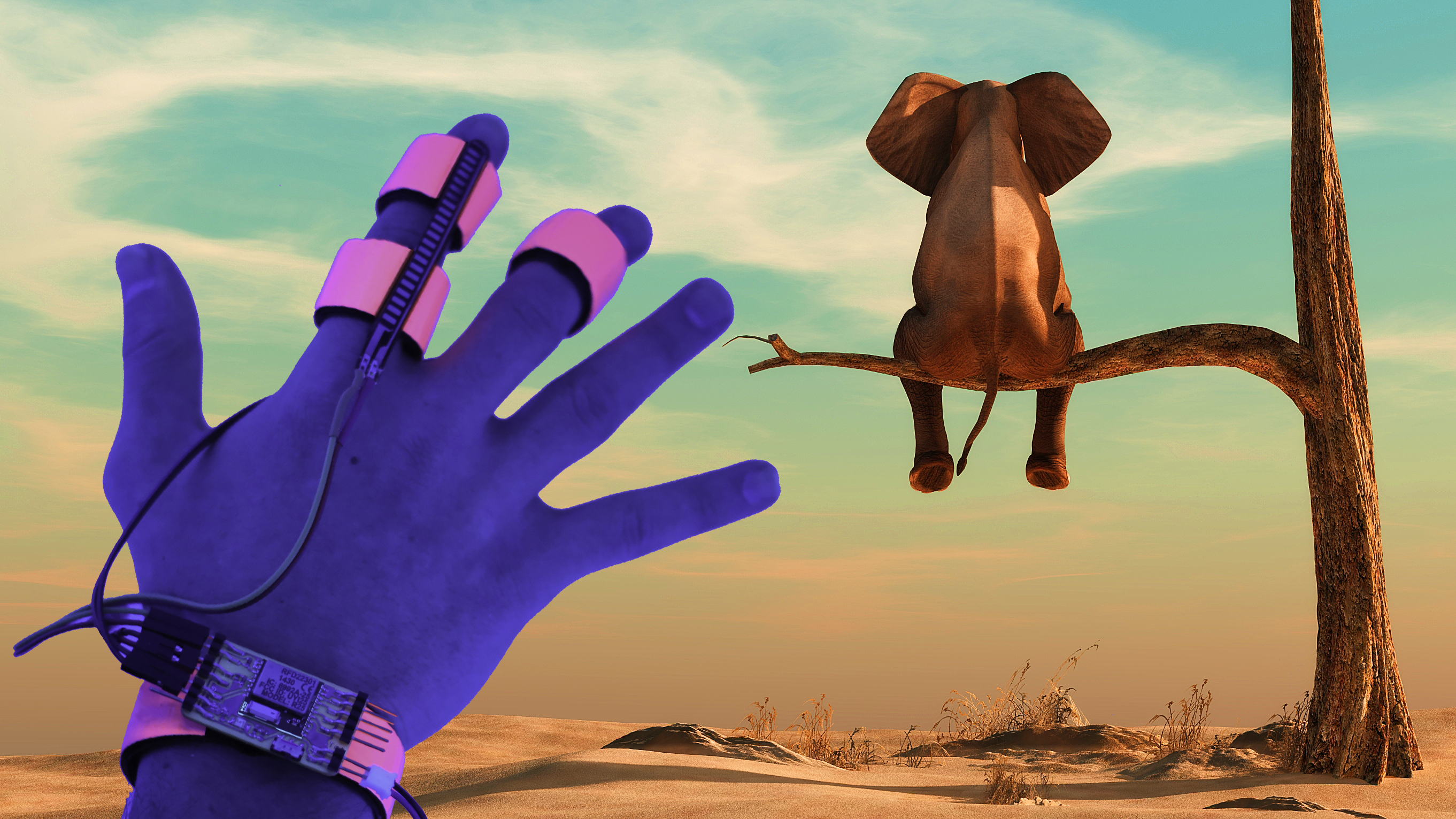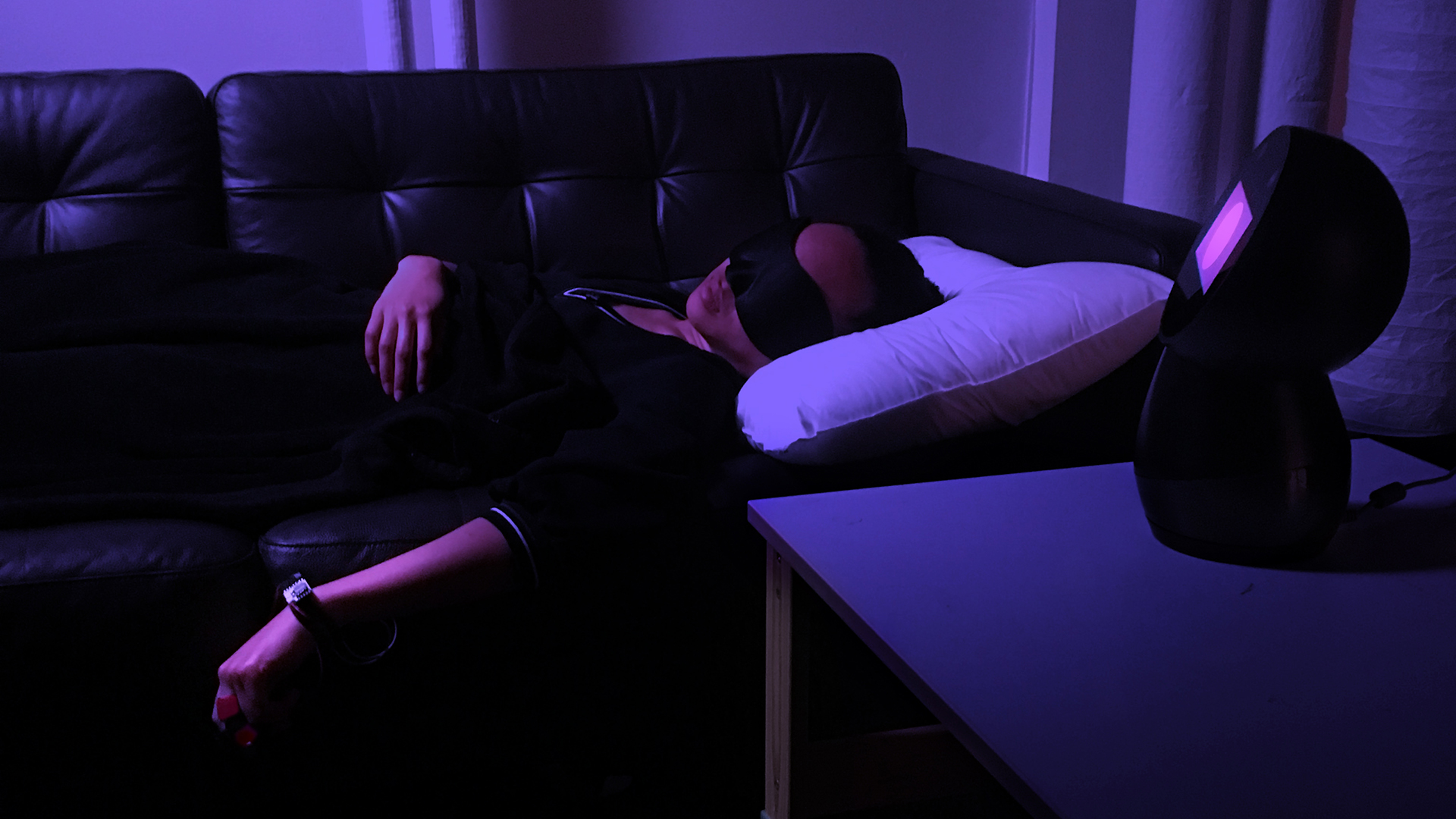Dream-shaping tech from MIT channels suggestions into your dreams
Guided dreaming could be used to boost creativity or to confront sources of stress and trauma.

MIT scientists have figured out how to manipulate your dreams by combining an app with a sleep-tracking device called Dormio. In their new study, the researchers were able to insert certain topics into a person's dreams, with some pretty bizarre outcomes.
To do so, the researchers at MIT Media Lab's Fluid Interfaces — a group that develops wearable systems and interfaces to enhance cognitive skills — used a technique called targeted dream incubation (TDI).
Prior studies have shown that during a rare dream state known lucid dreaming, in which a sleeper is aware that a dream is taking place, dreamers can use that awareness to consciously shape aspects of their dreams. TDI takes advantage of an early sleep stage, known as hypnagogia, to achieve a similar result (though not quite "controlling" dreams outright), researchers told Live Science.
Related: 7 mind-bending facts about dreams
During hypnagogia — a semi-lucid dream state that occurs during the onset of sleep — TDI introduced "targeted information" to a sleeper, "enabling direct incorporation of this information into dream content," the scientists wrote in a new study, published in the August issue of the journal Consciousness and Cognition. They conducted dream experiments by performing "serial awakenings" during daytime napping sessions in 25 participants.
Subjects first recorded audio prompts in an app, such as, "remember to think of a tree" and "remember to observe your thoughts," and then prepared for sleep, according to the study.
A hand-worn sleep tracker monitored the subject's heart rate, electrical changes on the skin surface, and the amount their fingers were bent or relaxed, to detect when a sleeper entered hypnagogia and was therefore "open to influence from outside audio cues," said lead study author Adam Haar Horowitz, a doctoral candidate in MIT Media Lab's Fluid Interfaces Group. The Dormio sleep tracker communicated with the app, "which delivers audio at the correct times, and records audio of dream reports" when the subject is awake, Haar Horowitz told Live Science in an email.
Sign up for the Live Science daily newsletter now
Get the world’s most fascinating discoveries delivered straight to your inbox.
Just as a subject drifted off to sleep and entered hypnagogia, Dormio would coordinate with the app to wake them up with the pre-recorded prompts. This cycle repeated several times, with the sleeper also recording a brief "dream journal" entry into the app when they were awakened.
"Simply put, people tell us whether the prompts appear in their dream," Haar Horowitz said. "Often, they are transformed — a 'tree' prompt becomes a tree-shaped car — but direct incorporation is easily identified."
The scientists found that 67% of the subjects' dream reports mentioned dreams that incorporated a tree. "I was following the roots with someone and the roots were transporting me to different locations," one participant recalled. Another mentioned "a tree from my childhood, from my backyard. It never asked for anything." The same subject, in later awakenings, described "trees splitting into infinite pieces" and "a shaman, sitting under the tree with me, he tells me to go to South America."
"Dream reports increased in bizarreness and immersion with each awakening," but the scientists did not develop a universal rating system for the bizarreness of the dreams, the study authors reported.

Dream on
Though some dreaming takes place during hypnagogia, most dreaming happens during rapid eye movement (REM) sleep. Before the brain achieves REM sleep, it passes through three stages of non-REM sleep. First is the transition from wakefulness into sleep, when hypnagogia takes place. This is followed by light sleep, and then, finally, deep sleep, according to the National Institutes of Health (NIH). Throughout the night, a sleeper will cycle through REM and non-REM sleep several times, the NIH says.
Dreams during REM sleep can be vivid, bizarre or intense, and most of the time, the dreamer will experience them passively. However, sometimes a dreamer may find themselves in a lucid dream, in which they recognize that they're dreaming. In this unusual state of awareness, the sleeper might be able to manipulate events in their dream, according to the Encyclopedia of Neuroscience (Elsevier Ltd., 2009).
Related: Daydreaming again? 5 facts about the wandering mind
Such experiences are rare. In a given population, only about half of the people will have ever experienced lucid dreaming, according to the book "Principles and Practice of Sleep Medicine" (Sixth Edition, 2017). Of those individuals, approximately 20% have lucid dreams on a monthly basis, and around 1% have lucid dreams several times a week.
But by interrupting hypnagogia, the study authors found an alternate route for providing sleepers with the ability to shape their dream content, said Tomás Vega, a former graduate student researcher with MIT's Fluid Interfaces Group. Vega is the co-founder at Augmental Tech, a company building technologies that integrate with the human body, and he created the circuit board and software that TDI uses to record different biosignals.
Though Vega initially thought that sleep studies could be conducted only with expensive, bulky equipment in a lab setting, "I realized that we can use really cool devices that are almost off the shelf," he told Live Science.
In your wildest dreams
Vega had tested Dormio on his own dreaming brain, using the tech to plant a suggestion about a favorite movie, "Willie Wonka and the Chocolate Factory," with an audio prompt of the film's chocolate factory workers, the Oompa Loompas, singing their signature song.
Singing Oompa Loompas did indeed appear in Vega's dream — but with a twist.
"I started dreaming about being in a chocolate waterfall, surrounded by Oompa Loompas singing 'Oompa Loompa, doopity doo,'" he said. However, Vega, who is lactose intolerant, also noted that the waterfall was made of dark chocolate.
"It was a lactose-free waterfall," he said. "So, is my lactose-intolerance knowledge in my consciousness or in my subconscious? I induced this dream content, but there were still some constraints, like, 'You cannot just dream about milk chocolate because that's going to harm you,'" he said.
Creative brainstorming would likely be the most immediate application for targeted dreaming, Haar Horowitz said. But as many of the mechanisms that control sleep and dreaming are not well understood, it's too soon to say precisely how nudging a dream's content or achieving a state of awareness while dreaming could directly benefit a sleeper in other ways, he added.
"Every benefit shown to be correlated to dreaming deserves an experiment on whether it can be causally shown to come from dreaming," Haar Horowitz said. "This ranges from past work on nightmares and PTSD to current work on language learning in sleep, or creativity and eureka moments in dreams."
Originally published on Live Science.

Mindy Weisberger is an editor at Scholastic and a former Live Science channel editor and senior writer. She has reported on general science, covering climate change, paleontology, biology and space. Mindy studied film at Columbia University; prior to Live Science she produced, wrote and directed media for the American Museum of Natural History in New York City. Her videos about dinosaurs, astrophysics, biodiversity and evolution appear in museums and science centers worldwide, earning awards such as the CINE Golden Eagle and the Communicator Award of Excellence. Her writing has also appeared in Scientific American, The Washington Post and How It Works Magazine. Her book "Rise of the Zombie Bugs: The Surprising Science of Parasitic Mind Control" will be published in spring 2025 by Johns Hopkins University Press.









